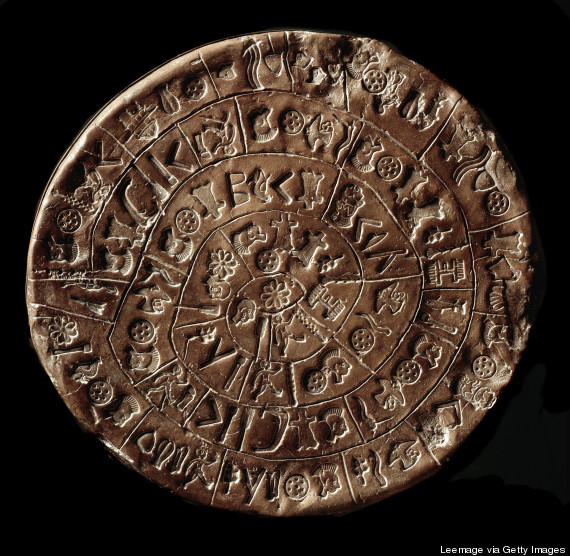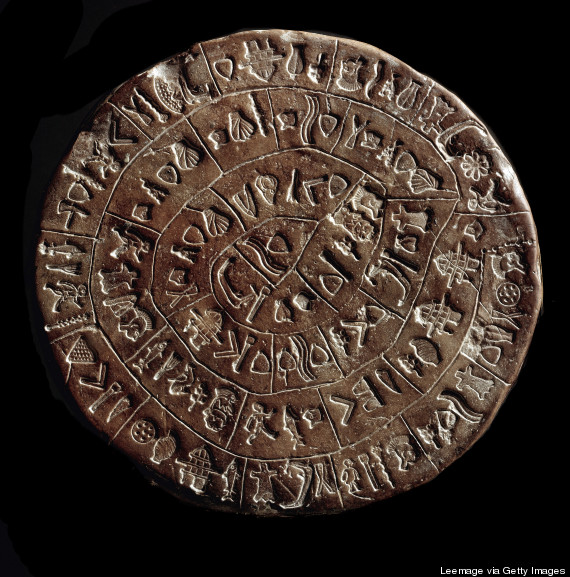It looks like you're using an Ad Blocker.
Please white-list or disable AboveTopSecret.com in your ad-blocking tool.
Thank you.
Some features of ATS will be disabled while you continue to use an ad-blocker.
3
share:
Scientists have been trying to decipher the mysterious "Phaistos Disk" ever since the 4,000-year-old clay disk was discovered in 1908 on the Greek island of Crete.
But no one seems to have been able to translate the mysterious language inscribed on the disk, which dates back to 1700 B.C. and the height of the Minoan civilization -- until now.
Dr. Gareth Owens, who has been studying what he cheekily refers to as the "first Minoan CD-ROM," has figured out not only what the language sounded like but also some of the meaning it conveys, Discovery News reported.
"In collaboration with John Coleman, professor of phonetics at Oxford, we spent six years producing the best possible reading," Owens, a linguist researcher with the Technological Educational Institute of Crete, told The Huffington Post in an email.
The disk can be read in a spiral direction from the outside rim to the inside. Using what previous studies have shown about Cretan hieroglyphics, and the scripts Minoan Linear A and Mycenaean Linear B from ancient Greece, the researcher was able to identify three key words:
IQEKURJA, which may mean "pregnant mother" and/or "goddess."
IQE, which may mean "mother" and/or "goddess" and which appears repeatedly on the disk.
IQEPAJE or IQE-PHAE, which may mean "shining mother" or "goddess."
Owens concluded that the disk may contain a prayer to a Minoan goddess.
"The goddess mother has been suspected for a century because of what we think we know about Minoan religion, but the point was to prove it linguistically," Owens said in the email. "The proof is in the pudding."
www.huffingtonpost.com...
Klik here for more including a Ted Talk vid by Dr Owens.

The front of the Phaistos disk, which is 16 centimeters in diameter.

The back of the Phaistos disk.
This is a biggie on par with the Rosetta stone.
edit on 6-11-2014 by Spider879 because: (no reason given)
Looks like it is a stamped clay object of some sort. I wonder what it was used for? Possibly money of some sort?
new topics
-
This should be plastered all over the airwaves
Mainstream News: 2 hours ago -
Oh, Good Gosh. “Kremlin Warns Stay Away from Greenland.”
World War Three: 4 hours ago -
Archbisop Vigano Warns of Deep State and Deep Church
New World Order: 4 hours ago -
A Flash of Beauty: Bigfoot Revealed ( documentary )
Cryptozoology: 10 hours ago
top topics
-
This should be plastered all over the airwaves
Mainstream News: 2 hours ago, 11 flags -
Fire insurance in LA withdrawn months ago
General Conspiracies: 13 hours ago, 9 flags -
Oh, Good Gosh. “Kremlin Warns Stay Away from Greenland.”
World War Three: 4 hours ago, 9 flags -
A Flash of Beauty: Bigfoot Revealed ( documentary )
Cryptozoology: 10 hours ago, 7 flags -
Archbisop Vigano Warns of Deep State and Deep Church
New World Order: 4 hours ago, 7 flags
3
